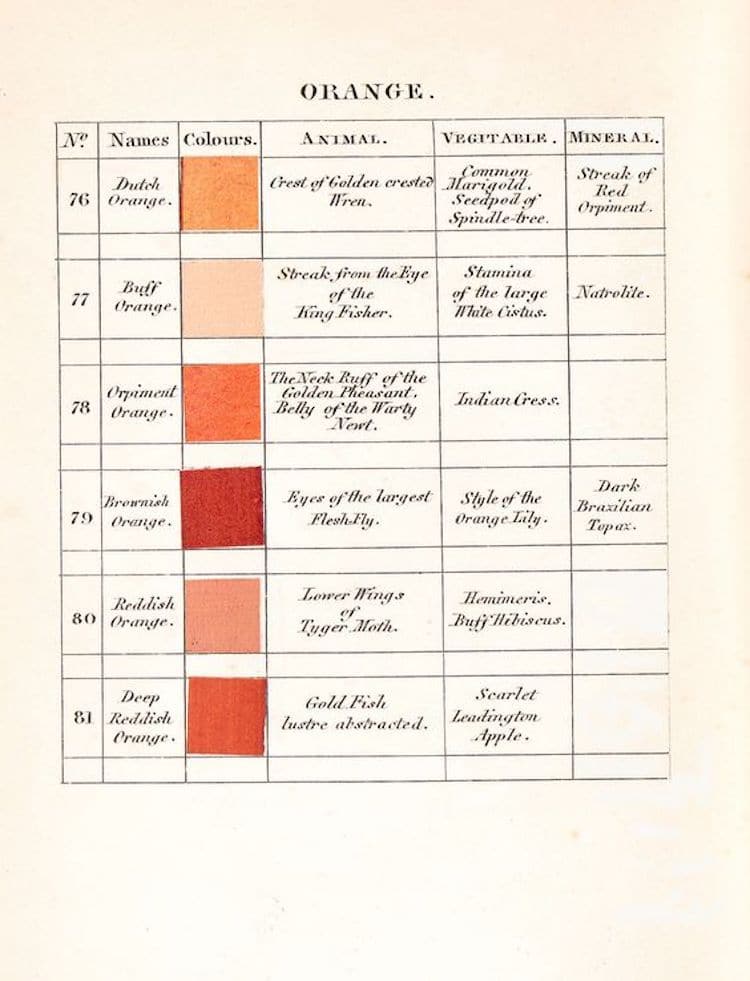Werner’s Nomenclature of Colours
While Isaac Newton and the 17th century were more decisive for understanding the physics of color, you can’t beat the late 18th and early 19th century for a broader, subtler, more humanistic sense of the science of colors. The playwright and polymath J.W. von Goethe built up his Theory of Colours by collecting almost 18,000 meteorological and mineralogical specimens, with an emphasis on subtle distinctions between colors and their psychological perception in nature, rather than wavelengths of light.
Another phenomenal collection of naturalist examples is Abraham Gottlob Werner’s Nomenclature of Colours, first published in 1814. An 1821 edition recommends it for “zoology, botany, chemistry, mineralogy, and morbid anatomy.” At My Modern Met, Kelly Richman-Abdou writes:
Nomenclature of Colours served as a must-have reference for artists, scientists, naturalists, and anthropologists alike. The exquisitely rendered guide showcases the earth’s rich range of color by separating it into specific tones. Illustrated only by a small swatch, each handwritten entry is accompanied by a flowery name (like “Arterial Blood Red” and “Velvet Black”) as well as an identifying number. What the book is truly known for, however, is its poetic descriptions of where each tone can be found in nature.
Werner was a German mineralogist who created the system of color classification in the book to help distinguish between his own samples. His Scottish collaborators Patrick Syme and Robert Jameson were a painter and naturalist, respectively, who adapted the system into the book format in which it exists today. As you might guess, each color in the book includes a name, a swatch, and examples from the animal, vegetable, and mineral world showing where each color is found in nature.

Probably the most famous user of Werner’s book was Charles Darwin, who used it to help describe animals and other bits of the natural world in his books and journals. But if you think about it, before photography, anything that let naturalists describe what they were seeing in something resembling a universal vocabulary had to be essential. Essential enough that they were willing to produce the book by hand, with no real way to print in color.
Amazon sells a pocket-sized facsimile edition of the book. It may not be as handy as a color wheel for painting a room, but might be handier if you’re identifying bird eggs or a rare bit of stone.





Stay Connected